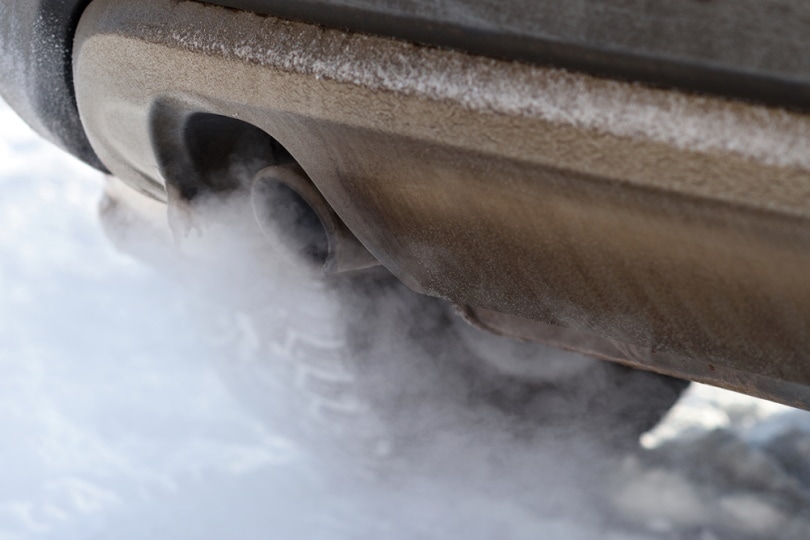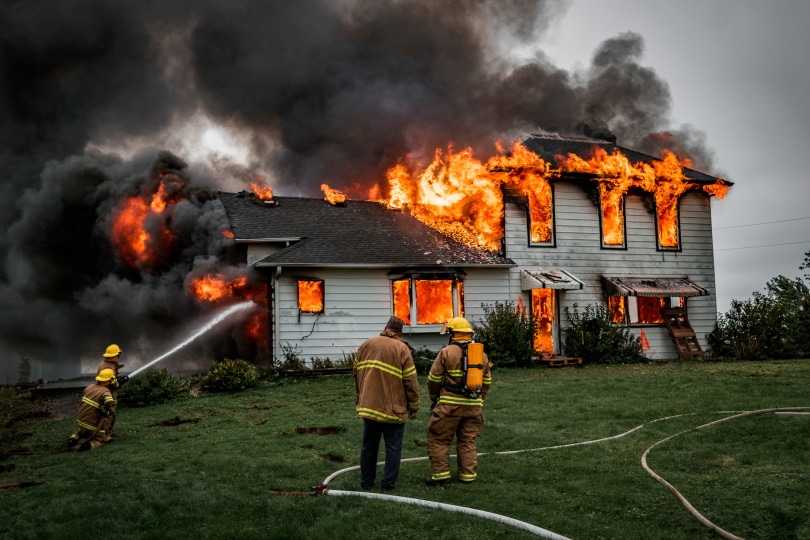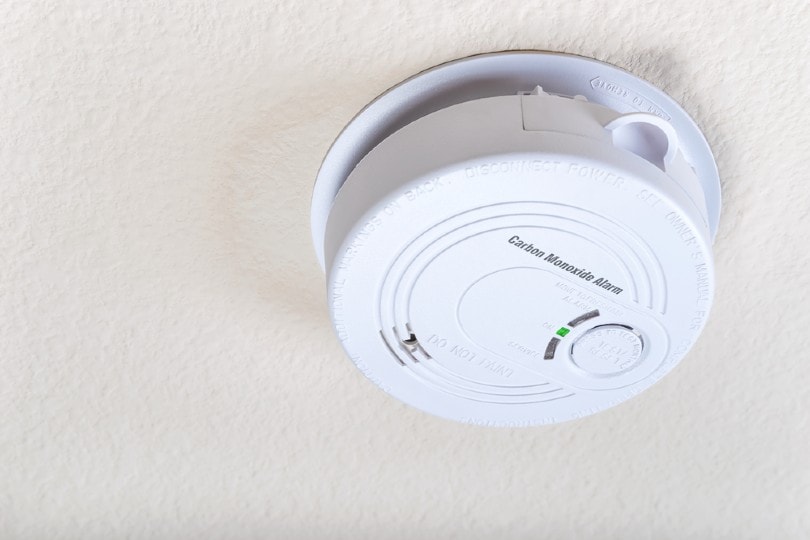Is Carbon Monoxide Flammable? Prevention, Factors, & FAQ
-
Pete Ortiz
- Last updated:

Carbon monoxide (CO) is often referred to as the silent killer because of its ability to be breathed in undetected while poisoning the victim over time. It is usually a by-product of incomplete combustion though it can occur naturally too. It is also invisible, colorless, and has no smell.
But can CO gas ignite and cause a fire? The short answer is yes—if it builds up in an enclosed space. However, the potential for CO gas to be flammable isn’t as dangerous as you might think. Keep reading to learn more about CO flammability.
Can Carbon Monoxide Cause a Fire?
CO is a by-product of the incomplete combustion of fossil fuels and petroleum products. Due to this, instead of carbon reacting with two oxygen atoms under heat to form carbon dioxide and water, it reacts with one. The resulting gas is a combination of one carbon and one oxygen atom, CO.
Other than incomplete combustion, CO may form when there is limited oxygen in the air but enough heat to cause carbon to react, with oxygen and water (H2O) being the other product.
When oxygen is introduced, CO oxidizes into carbon dioxide and water. This reaction is exothermic.¹
The gas will burn at temperatures below 199 degrees Fahrenheit which means it can burst into flames at below ambient temperature.
Causing fire is one thing, a deadly explosion is another—how then does CO explode?
- Scenario 1: When CO leaks into an enclosed room, its concentration increases replacing other gasses like nitrogen. If someone introduces a spark, the gas explodes.
- Scenario 2: As carbon monoxide burns violently, heat builds up. We all know too well when this happens, gasses expand, and pressure increases. If there is no room for hot gasses to escape through, the high pressure will push gasses through weak spots such as roofs and windows, resulting in an explosion.

Can Burning Carbon Monoxide Kill You?
Yes. You can die from burning carbon monoxide in two different ways.
CO flames produce temperatures as high as 3800 degrees Fahrenheit¹. If the reaction is happening in an enclosed room, the heat may even melt steel.
Alternatively, CO releases a mixture of smoke, soot, and other poisonous gasses. After only a few gasps from this oxygenless mixture, you will likely suffocate. This is because soot’s tiny particles will dislodge deep into the lungs reducing its effectiveness.
What Is the Explosive Limit of Carbon Monoxide?
CO has an explosive limit of between 125,000 and 126,000 ppm¹ (parts per million), which is equal to the lower explosive limit (LEL) of 12.5%. Compared to methane’s LEL of 2.2%, you will need 5.6 (12.5/2.2) times more CO to be explosive.
How Do You Prevent Carbon Monoxide From Igniting in Your Home?
Before answering this question, you need to understand some of the sources of CO at home.
Furnaces, gas stoves, fireplaces, combustion engine vehicles, generators and mowers in the garage, grills, and gas lanterns are the major sources of CO. By monitoring gasses emitted by these sources; you will reduce the risk of carbon monoxide explosion.
You may try:
1. Installing CO Sensors or Detectors
CO sensors are small devices that track the gas level and alert you through a siren. There are many different types of detectors, but the most common uses a chemical solution and electric current (electrochemical sensor). The chemical solution reacts with CO in the air, which triggers specific changes in the electric current flowing through it. This sets off an alarm.

2. Opening Windows and Doors Whenever Using Possible Sources of CO
When cooking, grilling, or chatting by the fireplace, open any doors and windows at regular intervals. These openings let in fresh air diffusing CO in the room. If the weather is too cold to open doors, ensure the HVAC system is working properly.
3. Don’t Run Any Machine in the Garage While the Door Is Closed
In June 2015, Cindy George and her three kids died from carbon monoxide poisoning¹ in their garage after the door was left ajar. This is an example of how deadly it is to work in the garage with a running car and shut doors.
There is a high chance that George’s garage would have caught fire if there was no opening to diffuse small quantities of CO.
Conclusion
Carbon monoxide reacts with oxygen to produce heat, water, and carbon dioxide. If it accumulates in the room, it may burst into flame and cause an explosion. Fortunately, you can avoid such accidents by installing CO sensors, opening windows to let in fresh air when near any source of CO, and switching off the car’s engine when in the garage.
- https://www.employees.csbsju.edu/cschaller/Reactivity/thermo/TDhess.htm#:~:text=So%20we%20are%20just%20talking,or%20it%20forms%20carbon%20dioxide.&text=That%20reaction%20is%20exothermic
- https://www.quora.com/Is-carbon-monoxide-flammable-or-explosive
- https://www.thoughtco.com/flame-temperatures-table-607307
- https://www.quora.com/How-hot-can-a-human-get-before-they-die
- https://coal.sierraclub.org/sites/nat-coal/files/infographic-soot-kills.pdf
- https://afcintl.com/wp-content/uploads/docs/applications/Carbon%20Monoxide%20Investigations.pdf
- https://www.nbcnews.com/news/us-news/family-6-found-dead-vehicle-san-antonio-garage-n1225476
Featured Photo Credit: ketrinbell, Shutterstock
Contents


